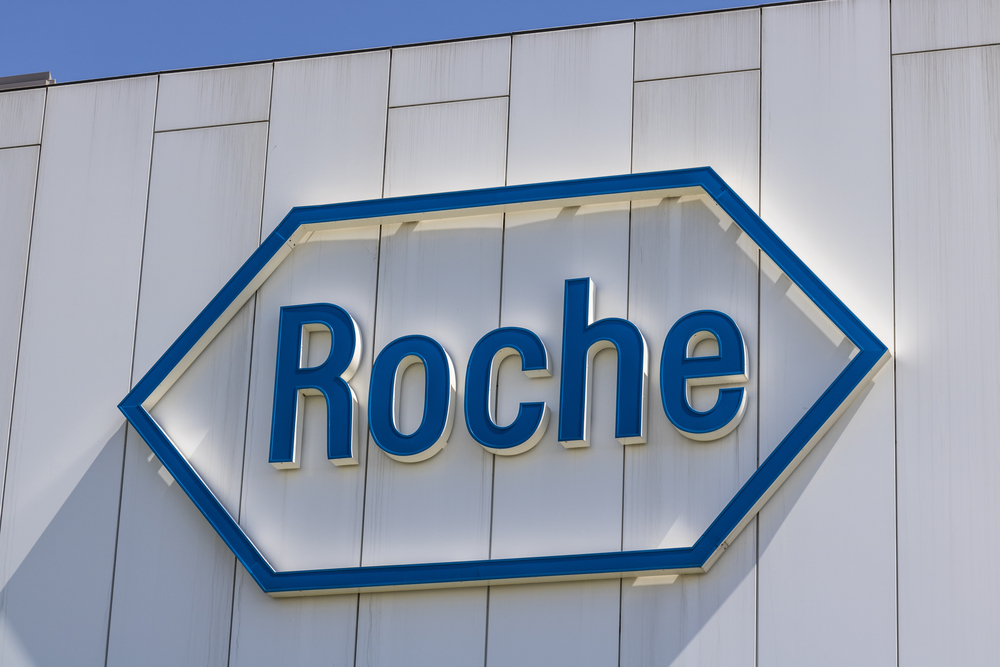
Roche announced that the EU Committee for Medicinal Products for Human Use (CHMP) has adopted a positive opinion for Hemlibra® (emicizumab) for routine prophylaxis of bleeding episodes in people with haemophilia A with factor VIII inhibitors. The CHMP has recommended Hemlibra for use in all age groups. Nearly one in three people with severe haemophilia A can develop inhibitors to factor VIII replacement therapies, putting them at greater risk of life-threatening bleeds or repeated bleeding episodes that can cause long-term joint damage. The Hemlibra Marketing Authorisation Application is being reviewed under accelerated assessment, a procedure granted to medicines that the CHMP believes are of major interest for public health and therapeutic innovation. Based on the positive CHMP recommendation, a final decision regarding the approval of Hemlibra is expected from the European Commission in the near future.
“Many people with haemophilia A develop inhibitors, which greatly impacts their ability to treat or prevent bleeds and diminishes their quality of life,” said Brian O’Mahony, Chief Executive of the Irish Haemophilia Society and President of the European Haemophilia Consortium. “It’s been over 20 years since we last saw a new medicine for people with haemophilia A with inhibitors, so there is a pressing need for innovative treatments that control bleeding and decrease the negative impact on quality of life.”
“This positive CHMP opinion represents a significant step towards bringing this new treatment to people with haemophilia A with inhibitors in Europe,” said Sandra Horning, M.D., Roche’s Chief Medical Officer and head of Global Product Development. “Hemlibra has been shown to effectively reduce the frequency of bleeds compared to currently available medicines, and with once-weekly administration by injection under the skin, it could also greatly reduce the treatment administration burden, particularly for young children with haemophilia A with inhibitors and their families.”
The CHMP recommendation is based on the results of two pivotal clinical studies for people with haemophilia A with inhibitors, the phase III HAVEN 1 and HAVEN 2 studies.
- In the HAVEN 1 study in adults and adolescents (12 years of age or older) with haemophilia A with inhibitors, Hemlibra prophylaxis showed a statistically significant reduction in treated bleeds of 87% (risk rate [RR]=0.13, p<0.0001) compared to no prophylaxis. In a first-of-its-kind intra-patient analysis, Hemlibra prophylaxis resulted in a statistically significant reduction in treated bleeds of 79% (RR=0.21, p=0.0003) compared to previous treatment with bypassing agent (BPA) prophylaxis collected in a non-interventional study (NIS) prior to enrolment.
- Interim results from the HAVEN 2 study in children younger than 12 years of age with haemophilia A with inhibitors showed that 87% (95% CI: 66.4; 97.2) of children who received Hemlibra prophylaxis experienced zero treated bleeds. In an intra-patient analysis of 13 children who had participated in the NIS, Hemlibra prophylaxis resulted in a 99% (RR=0.01, 95% CI: 0.004; 0.044) reduction in treated bleeds compared to previous treatment with a BPA.
The most common adverse events (AEs) from pooled clinical studies occurring in 10% or more of people treated with Hemlibra were injection site reactions and headache. In the HAVEN 1 study, three people experienced thrombotic microangiopathy (TMA) events and two people experienced serious thrombotic events when on average, a cumulative amount of more than 100 U/kg/24 hours of activated prothrombin complex concentrate (aPCC) (FEIBA®) was administered for 24 hours or more while receiving Hemlibra prophylaxis.
These data also led to the approval of Hemlibra for routine prophylaxis to prevent or reduce the frequency of bleeding episodes in adults and children with haemophilia A with factor VIII inhibitors by the US Food and Drug Administration (FDA) on 16 November 2017. Hemlibra was reviewed by the FDA under Priority Review and granted Breakthrough Therapy Designation by the FDA in people 12 years of age or older with haemophilia A with inhibitors in September 2015. Updated analyses from both the HAVEN 1 and HAVEN 2 studies were presented last December at the 2017 American Society of Hematology (ASH) Annual Meeting and showed that after longer follow-up, Hemlibra continued to substantially reduce bleeds in people with haemophilia A with inhibitors.
Hemlibra is being studied in a robust clinical development programme that includes two additional phase III studies, HAVEN 3 and HAVEN 4. Results from HAVEN 3 showed a statistically significant and clinically meaningful reduction in the number of treated bleeds over time in adults and adolescents (12 years of age or older) with haemophilia A without inhibitors who received Hemlibra prophylaxis every week or every two weeks, compared to those receiving no prophylaxis. Interim results from HAVEN 4 showed a clinically meaningful control of bleeding in adults and adolescents (12 years of age or older) with haemophilia A with or without inhibitors who received Hemlibra prophylaxis once every four weeks. Data from both these studies will be presented at an upcoming medical conference and submitted to health authorities around the world for approval consideration.
About HAVEN 1 (NCT02622321; Study BH29884)
HAVEN 1 is a randomised, multicentre, open-label, phase III study evaluating the efficacy, safety and pharmacokinetics of once-weekly subcutaneous administration of Hemlibra prophylaxis compared to no prophylaxis in adults and adolescents with haemophilia A with inhibitors to factor VIII. The study included 109 patients (12 years of age and older) with haemophilia A with inhibitors to factor VIII, who were previously treated with BPAs on-demand or as prophylaxis. Patients previously treated with on-demand BPAs were randomised in a 2:1 ratio to receive Hemlibra prophylaxis (Arm A) or no prophylaxis (Arm B). Patients previously treated with BPAs as prophylaxis received Hemlibra prophylaxis (Arm C). Additional patients previously treated with on-demand BPAs were also enrolled in a separate arm (Arm D). On-demand treatment of breakthrough bleeds with BPAs was allowed per protocol in all arms.
Below is a summary of key data from the HAVEN 1 study.
- The primary endpoint showed a statistically significant reduction in treated bleeds of 87% (risk rate [RR]=0.13, p<0.0001) with Hemlibra prophylaxis compared to no prophylaxis.
- In addition, 62.9% (95% CI: 44.9; 78.5) of patients who received Hemlibra prophylaxis experienced zero treated bleeds compared to 5.6% (95% CI: 0.1; 27.3) of patients who received no prophylaxis.
- All 12 secondary endpoints were positive. In a first-of-its-kind intra-patient analysis, Hemlibra prophylaxis resulted in a statistically significant reduction in treated bleeds of 79% (RR=0.21, p=0.0003) compared to previous treatment with BPA prophylaxis collected in the NIS prior to enrolment. Additionally, 70.8% (95% CI: 48.9; 87.4) of patients experienced zero treated bleeds with Hemlibra prophylaxis compared to 12.5% (95% CI: 2.7; 32.4) with previous treatment with BPA prophylaxis during the NIS.
- Improvements in bleed rate with Hemlibra prophylaxis compared to no prophylaxis included an 80% (RR=0.20, p<0.0001) reduction in all bleeds, a 92% (RR=0.08, p<0.0001) reduction in treated spontaneous bleeds, an 89% (RR=0.11, p=0.0050) reduction in treated joint bleeds and a 95% (RR=0.05, p=0.0002) reduction in treated target joint bleeds.
- Hemlibra prophylaxis showed a statistically significant and clinically meaningful improvement in the Haemophilia-specific Quality of Life (Haem-A-QoL) Total Score and Physical Health scale compared to no prophylaxis. This was measured 24 weeks after start of treatment in adults 18 years of age and older and evaluated haemophilia-related symptoms (painful swellings and presence of joint pain) and physical function (pain with movement and difficulty walking far).
- Hemlibra prophylaxis also showed a statistically significant and clinically meaningful improvement in the EuroQoL Five-Dimension-Five Levels Questionnaire (EQ-5D-5L) index utility scale and visual analogue scale of the EQ-5D-5L compared to no prophylaxis. This was measured 24 weeks after start of treatment in adults and adolescents 12 years of age or older, and evaluated measures of overall health status (mobility, self-care, usual activities, pain/discomfort and anxiety/depression).
About HAVEN 2 (NCT02795767; Study BH29992)
HAVEN 2 is a single-arm, multicentre, open-label, clinical study in children younger than 12 years of age with haemophilia A with inhibitors to factor VIII. The study is evaluating the efficacy, safety and pharmacokinetics of once-weekly subcutaneous administration of Hemlibra prophylaxis. The interim efficacy analysis, after at least 12 weeks of treatment, included 23 children.
- After a median observation time of 38.1 weeks, the interim analysis showed that 87% (95% CI: 66.4; 97.2) of children who received Hemlibra prophylaxis experienced zero treated bleeds. Interim data also showed:
- 34.8% (95% CI: 16.4; 57.3) of children experienced zero bleeds overall, which includes all treated and non-treated bleeds.
- 95.7% (95% CI: 78.1; 99.9) of children experienced zero treated spontaneous bleeds.
- 95.7% (95% CI: 78.1; 99.9) of children experienced zero treated joint bleeds.
- 100% (95% CI: 85.2; 100) of children experienced zero treated target joint bleeds.
- In an intra-patient analysis, 13 children who had participated in the NIS had an annualised bleeding rate (ABR) for treated bleeds of 17.2 (95% CI: 12.4; 23.8) on previous treatment with a BPA either as prophylaxis (n=12) or on-demand (n=1) compared to 0.2 (95% CI: 0.1; 0.8) on Hemlibra prophylaxis, corresponding to a 99% (RR=0.01, 95% CI: 0.004; 0.044) reduction in bleed rate. On Hemlibra prophylaxis, 11 children (84.6%) experienced zero treated bleeds.
Filed Under: Drug Discovery



